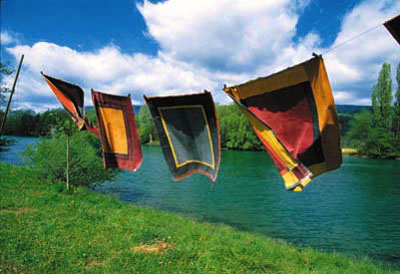
artCANAL
Exhibition
Le Landeron, Switzerland - May to October 2002
"AMISH QUILTS" INSTALLATION BY ASTRID FITZGERALD

©Copyright 2002 by Sandro Vannini
Astrid Fitzgerald's installation "Amish Quilts" is one the 25 projects selected by the Artcanal-Jury of Le Landeron, Switzerland from among many entries by artists of Swiss origin living throughout the world. She is one of four participating artists living in the United States and the only one from New York City where she has lived since 196l.
The object of the competition was to create a 3-dimensional outdoor installation embodying the concept of "building bridges" between nations and cultures. The sites for the installations are situated along the Zihl Canal which connects the lakes of Neuchâtel and Biel - a region known for its exceptional beauty and cultural richness. The installations will be seen by visitors from excursion boats on the canal, as well as from foot and bike paths.
Amish Quilts have long been treasured as an art form in America, but, as Fitzgerald discovered in her research, there is little evidence or knowledge of this culture in Switzerland, the land of origin of the Amish people.
It was in 1700, when a Mennonite religious leader in Switzerland named Jacob Amman, led his followers into the mountains to escape religious persecution. By 1710, many had emigrated to America, where they settled in Pennsylvania and became known as the Amish, named after their leader. Jacob Amman was born in Erlenbach in the Simmental and lived for a time outside of Bowil, southeast of Bern, where today local residents point out a historic house where he had lived.
In America, many Amish communities still thrive, living off the land without modern conveniences, observant of "the old ways," strong in their faith, simple in their lifestyle and passive in matters of war. Known for their conservative dress, they travel in horse-drawn carriages along the roads between their farms, where horse and plow still work the fields.
The Amish have made lasting contributions to American culture. Perhaps the most vivid and lasting of their artistic contributions has been the quilt, many of which are preserved in museums throughout America, where they are treasured as fine examples of American folk art. The beautiful geometric patterns and strong, natural colors reflect the Amish belief in Gemeinde, meaning community, communion and fellowship.
Astrid Fitzgerald's installation "Amish Quilts" attempts to bring the Amish quilt and the idea of the Gemeinde back to a region, near the Emmental where Jacob Amman lived three centuries ago. Her interpretations of early Amish designs form a bridge which spans time and space from Switzerland to America and now back once again. Their simplicity, order, and harmony reflect the Amish faith and are a reminder of those same principles which inspired Amman and his followers so long ago.
The Artcanal Exhibition is scheduled to run concurrently with expo.02, the Swiss National Exhibition which will attract thousands of visitors to the arteplages.
Expo.02 is the first national exhibition to take the human being rather than the nation as its focal point. The exhibits and themes may be described as follows: "Man and his relationship with nature" in Neuchatel; "Me and my body, my perceptions and my desires" in Yverdon; "Man and his identity, defined through the concepts of time and place" in Murten; "Man and his values" in Biel; "Man and his dormant rebellious side" on the mobile arteplage of the Jura.
QUILT INSTALLATION
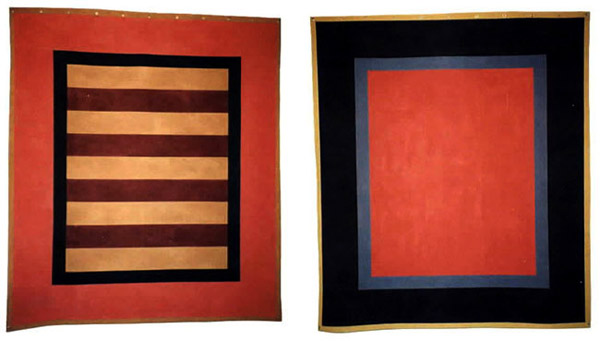
Amish Quilt I - Acrylic on canvas, 84"W x 100"L - front and back views
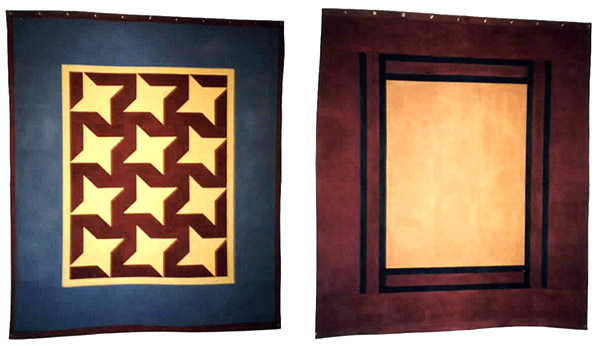
Amish Quilt II - Acrylic on canvas, 84"W x 100"L -front and back views
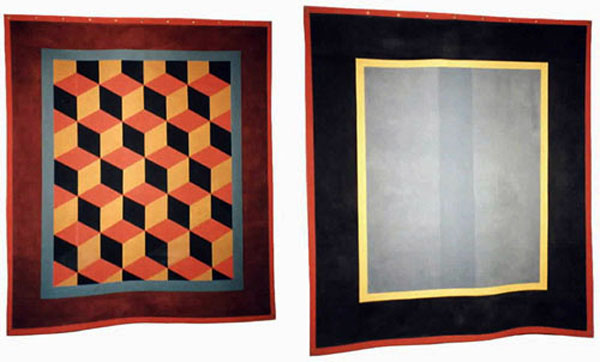
Amish Quilt III - Acrylic on canvas, 84"W x 100"L - front and back views
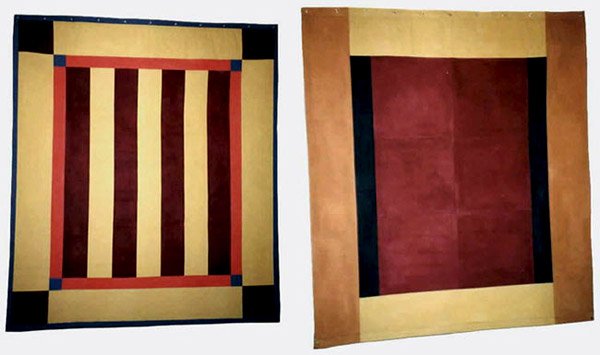
Amish Quilt IV - Acrylic on canvas, 84"W x 100"L - front and back views
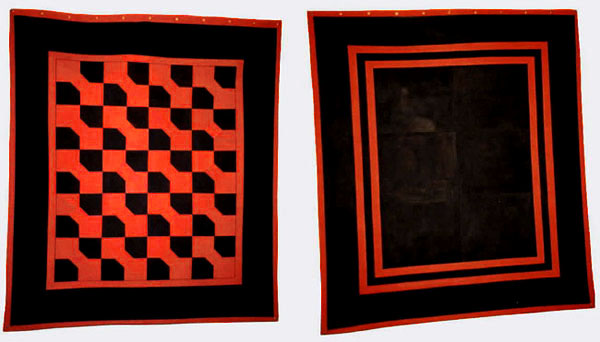
Amish Quilt V - Acrylic on canvas, 84"W x 100"L - front and back views
Installation shots - Zihlkanal, Le Landeron, Switzerland
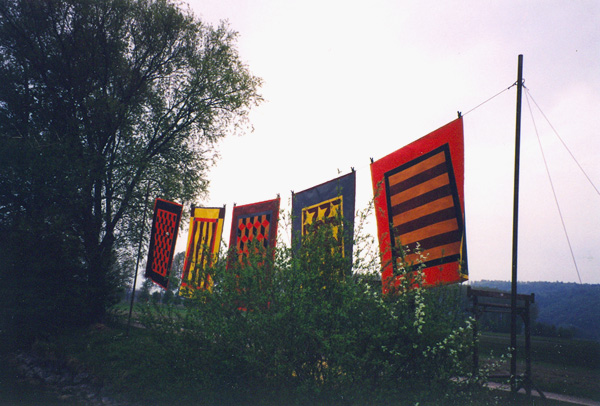
|
|
|
|
|
|